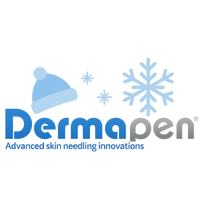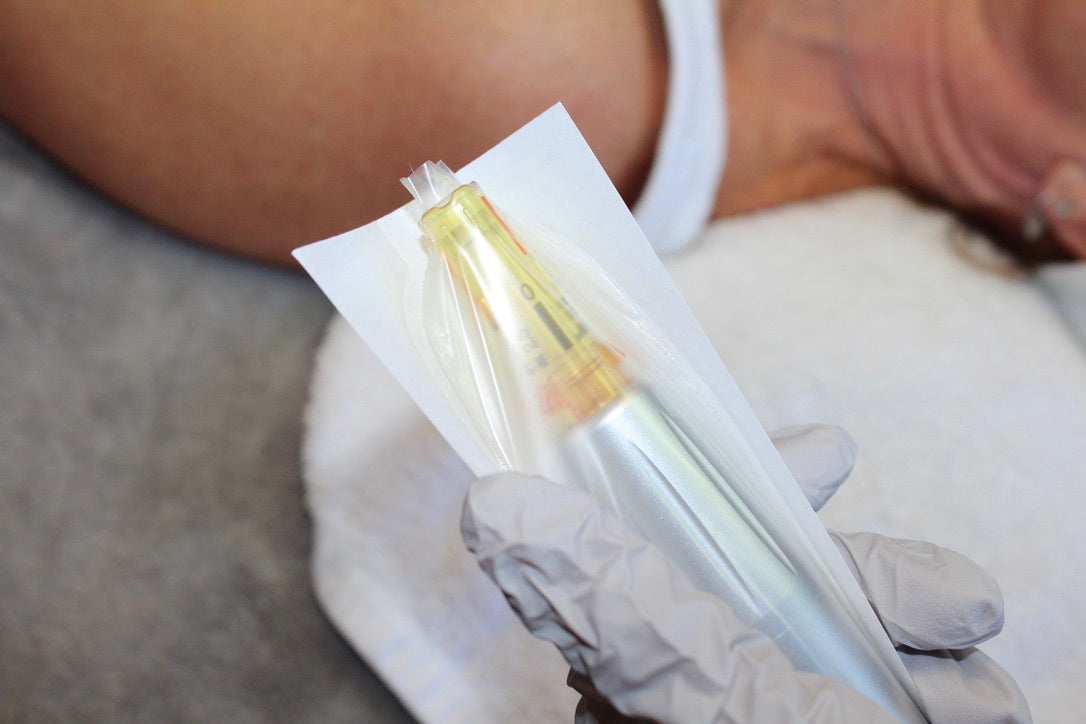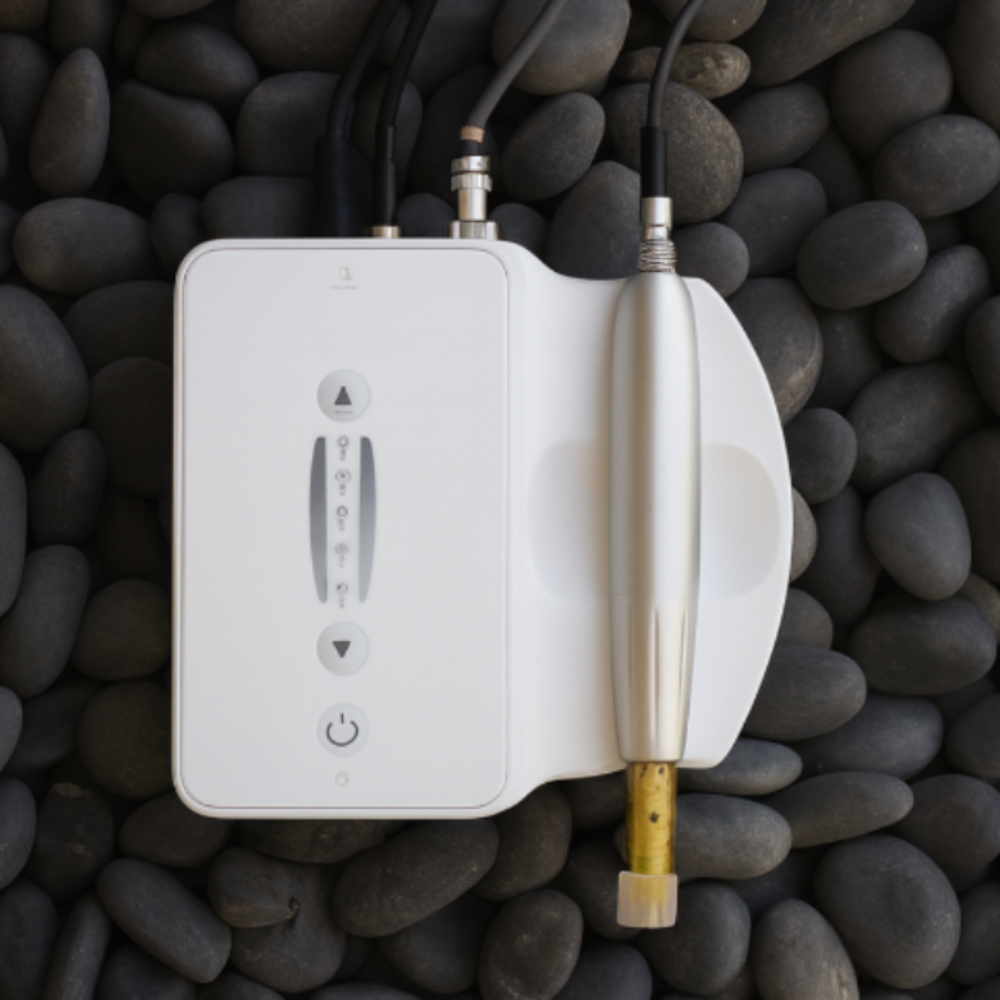
Microneedling and Retinol : The Advantages of Pairing
Aly BoekholderRetinol and Microneedling
The field of medicine and aesthetics is currently buzzing with the topic of retinol, but what is the reason behind this excitement? Retinol, a derivative of Vitamin A, facilitates the accelerated regeneration of cells. Easily accessible and highly favored in the treatment of many skin conditions, retinol is the perfect addition to your skincare regimen. Normally, our cells undergo turnover every 28 days from birth until approximately the age of 30. However, as we grow older, this rate gradually slows down, leading to turnover occurring every 50, 60, or even 70 days in certain cases. This sluggish turnover process is responsible for the dull, dry, and wrinkled appearance of the face. By absorbing retinol, the skin experiences an increase in cell turnover, resulting in a smoother and more rejuvenated complexion. To achieve optimal outcomes, it is recommended to incorporate retinol into your skincare routine as frequently as possible. By incorporating retinol serum into your microneedling procedure, results are increased and skin concerns diminish.
What is the Distinction Between Retinoids and Retinols?
Both Retinol and Retinoids belong to the Vitamin A family, but they differ in terms of potency. Retinoids are more potent than retinol and require a prescription. Synthetic retinoid medications like Tretinoin, Adapalene, and Tazarotene are the most commonly used retinoids, often prescribed for treating skin concerns such as acne, scarring, and pigmentation. On the other hand, Retinols are much milder and can be purchased over the counter in various forms, including Retinol Serum. When seeking products containing natural retinoids, Retinol serums and products are a favorable choice. These products typically cause less irritation to the skin and are considered safe for use during pregnancy (always consult with your doctor beforehand).
How Does Retinol Work?
The functioning mechanism of retinol involves the active ingredient retinoic acid, which is a metabolite of Vitamin A and plays a crucial role in cell turnover. Retinoic acid operates by permeating the cell membrane and binding to receptors on the cell nucleus, functioning similarly to a gene in order to stimulate cell growth and turnover.
Additionally, retinoic acid inhibits the production of collagenase, an enzyme responsible for collagen degradation. Given that collagen production diminishes with age, it is imperative to preserve it for the sake of skin health and appearance. Increased collagen levels result in plumper, more voluminous skin, improved skin elasticity, reduced wrinkles, and decreased sagging, ultimately contributing to a more youthful appearance.
A study conducted by Kong et al. in 2015 demonstrated that the use of 0.1% retinol products reduced the appearance of wrinkles on the cheeks by 64% and in areas with wrinkles or crow's feet around the eyes by 39% after a 12-week period. For teenagers, the enhanced cell turnover facilitated by retinol can lead to a reduction in breakouts, as regenerated cells unclog pores and promote more effective clearing.
On the other hand, individuals in their 20s and beyond primarily benefit from retinol use in terms of wrinkle prevention, treatment, and skin clearing. This information is supported by the American Academy of Dermatology in May 2021. By combining microneedling with a serum such as retinol, cell turnover rate skyrocket- resulting in more youthful looking skin, alongside the multitude of individual benefits from both mirconeedling procedures as well as retinol serums.
Potential Risks and Adverse Effects
Potential Risks and Adverse Effects As is often the case with beneficial treatments, there are potential risks associated with the use of retinoids and retinol. These substances can cause skin redness and irritation due to the increased turnover of skin cells.
However, with continued use, the skin will gradually adapt and develop a tolerance, allowing for the full benefits of retinol to be realized without any undue discomfort. It is important to note that retinol can be used during the summer months, but it must be accompanied by the use of a suitable SPF. This is because the new, fresh skin that is generated by retinol use is thinner and more susceptible to damage from sun exposure.
By using an SPF during the day, you can protect your skin from harmful UV rays and prevent further irritation or damage. In summary, while there are potential risks associated with the use of retinoids and retinol, these can be effectively managed through careful use and the adoption of appropriate protective measures. With proper care, the benefits of these substances can be fully realized, leading to healthier, more radiant skin.
Microneedling alongside Retinol Serum
The process of microneedling results in the restructuring of existing collagen fibers and the deposition of new collagen, elastin, and capillaries. This leads to the tightening of the skin and a significant increase in collagen types I, II, and VII (El-Domyati et al., 2015).
When combined with the effects of retinol, these treatments prove to be highly effective in addressing various skin issues such as acne, scarring, signs of aging, fine lines, wrinkles, and more.

Sources and Citations
Singh, A., & Yadav, S. (2016). Microneedling: Advances and Widening Horizons. Indian dermatology online journal. https://www.ncbi.nlm.nih.gov/pmc/articles/PMC4976400/
Multiple microneedling sessions for minimally ... - Wiley Online Library. (n.d.). https://onlinelibrary.wiley.com/doi/10.1111/ijd.12761
Retinoid or retinol?. American Academy of Dermatology. (n.d.). https://www.aad.org/public/everyday-care/skin-care-secrets/anti-aging/retinoid-retinol
professional, C. C. medical. (n.d.). Skin: Layers, structure and function. Cleveland Clinic. https://my.clevelandclinic.org/health/body/10978-skin
A comparative study of the effects of retinol ... - wiley online library. (n.d.-a). https://onlinelibrary.wiley.com/doi/full/10.1111/jocd.12193
Babamiri, K., & Nassab, R. (2010, January 1). Cosmeceuticals: The evidence behind the retinoids. OUP Academic. https://academic.oup.com/asj/article/30/1/74/199813
The beginner’s guide to retinol. THE BEGINNER’S GUIDE TO RETINOL: Medical Dermatology Associates of Chicago: Dermatology. (n.d.). https://www.dermchicago.com/blog/the-beginners-guide-to-retinol



